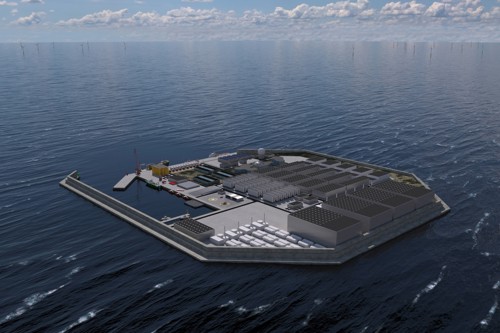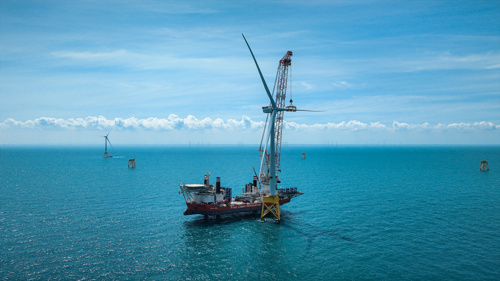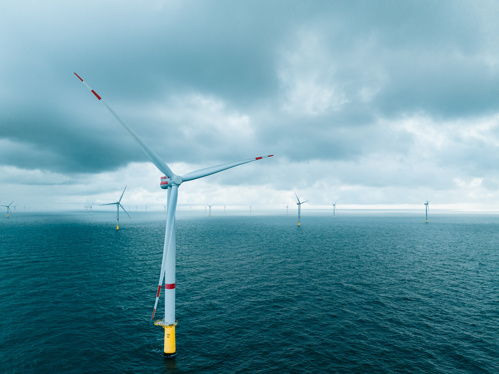
Major economies have plans to deploy more than 500 GW of offshore wind generation capacity by 2050. Meeting this goal will require deployment over the next 25 years of more than 10x the offshore wind generation installed in the past 35 years. This is a formidable challenge, which requires better scaling and integration tools. The key challenges are cost-efficient deployment, speed of deployment and integrating the energy into the global energy systems in the form of power or green hydrogen.




Copenhagen Energy Islands (CEI) is a new independent company carved out of CIP, dedicated to early-stage development of energy islands globally. Copenhagen Energy Islands will focus on developing energy island projects from origination and initial concept development through early-stage development before divesting them to infrastructure funds for mid- to late-stage development and construction. Copenhagen Energy Islands is currently developing a portfolio of around 10 energy island projects around the North Sea, the Baltic Sea and South-East Asia.

Energy islands are large-scale offshore energy hubs, which will enable the massive scaling required for the next generation of offshore wind deployment globally. Energy islands allow for a cost-efficient build-out and integration of offshore wind at a significantly larger scale and in an innovative way.
Energy islands address three main challenges to the build-out of offshore wind:

As the global energy mix shifts towards renewable power and hydrogen to achieve a net zero scenario by 2050, the global renewable electricity supply needs to increase around five times compared to 2022, according to the International Energy Agency. While governments and businesses are increasingly committed to decarbonisation targets, energy markets face extreme volatility driven by geopolitical tensions. Gas prices across Europe spiked in 2022 but have subsequently fallen. The volatility has highlighted the need for energy flexibility, security, and independence. This development leads to fundamental structural changes on the global energy system and increases the need for solutions that enables large-scale production, storage and flexibility.

Offshore wind will be a key technology to support the goal of net zero greenhouse gas emissions by 2050. Compared to onshore wind, offshore wind can be built at a larger scale, using materially larger turbines, which can help to reduce the cost of energy production. Additionally, wind speeds are typically stronger and more consistent at sea compared to land, resulting in higher electricity generation. Thirdly, land availability constraints are reduced compared to onshore technologies, particularly close to large load centres where real estate regulations and land costs create obstacles for developing renewables.

Decarbonising power production and electrification can only deliver part of the solution towards reaching the net zero target by 2050. For the hard-to-abate sectors such as steel, petrochemicals, maritime transportation, aviation, etc., indirect electrification via Power-to-X will be key. With increasing capacities of intermittent renewables in the energy system, another challenge is balancing the production and consumption of electricity. Power-to-X can provide large-scale flexibility and balancing of the power grid, reduce grid reinforcements and lessen curtailment of renewable energy. Today, nearly all hydrogen production is based on fossil fuels such as coal (brown hydrogen) and natural gas (grey hydrogen). In the future, hydrogen production will be green, with global demand forecasted to be between 100-140 Mt in 2030 (BNEF and DNV GL).
Offshore wind is expected to play a key role in reaching the green hydrogen production targets. However, with offshore wind deployment increasingly moving further from shore, as near-shore sites become depleted, this creates challenges related to the transport of energy over longer distances to shore. Transporting energy over long distances (+100km) in the form of electricity requires HVDC transmission, which is costly. As an alternative, energy can be converted into hydrogen offshore and transported to shore via hydrogen pipelines. Hydrogen pipelines are significantly more cost-efficient compared to HVDC transmission, allowing for transportation of higher volumes of energy with lower losses. This enables a lower levelised cost of hydrogen (LCOH) compared to onshore hydrogen production from offshore wind.